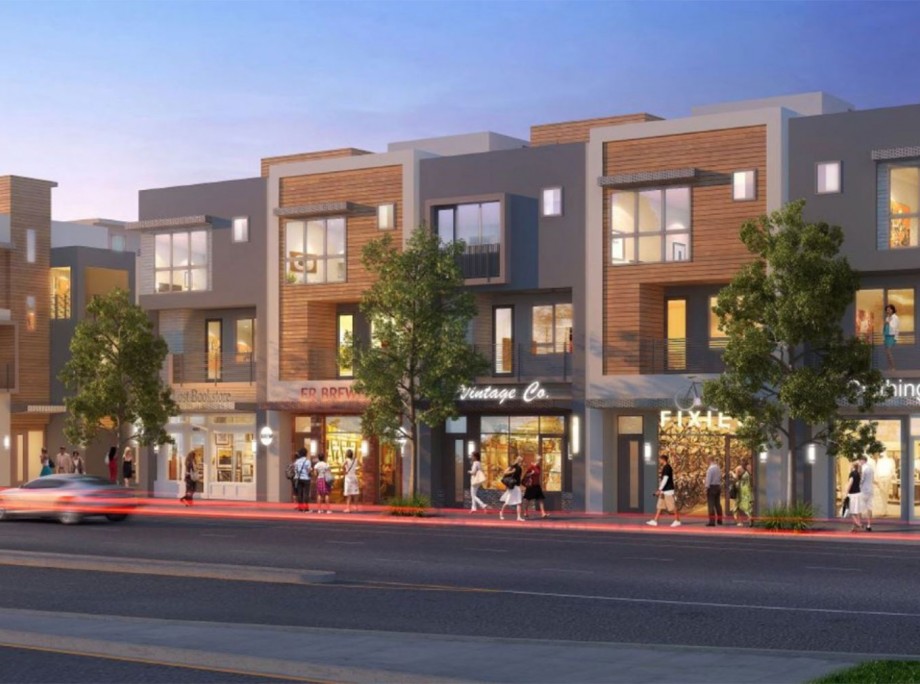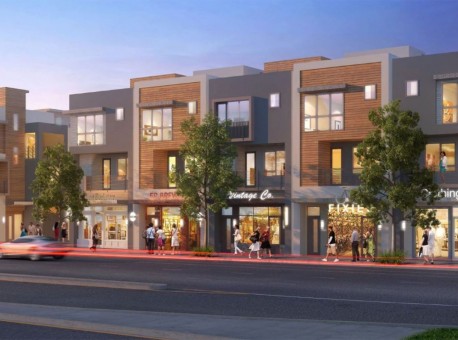For single-family homes on small lots, builders must up their game
Los Angeles Times
April 20, 2018
Small-lot developments have long been plagued by complexity: how to box together single-family homes on tight, row house-style parcels while maintaining privacy. Who wants to watch a neighbor washing his dishes, or worse?
Small-lot homes were born of a 2005 Los Angeles city ordinance that reduced minimum lot sizes to 600 square feet from 5,000 square feet in areas zoned for multifamily use. Think of New York City brownstones or townhouses — buyers own the land and don’t share walls, but mere inches can separate units.
The homes are stacked two or three stories and closely abut sidewalks and other perimeters. Favored by young urban professionals, the more affordable homes are about 1,600 to 2,000 square feet.
With such space constraints, home builders have to get creative. Here are a few ways designers and developers have been solving the complex spatial puzzle that small-lot home projects present.
Small-lot developments nearly always include private two-car garages, a gargantuan yet coveted space-eater — so why not use car lifts? Perhaps because only artists would appreciate such a novel idea, which is exactly why the design-build firm Modative includes car stackers in its artist-centric Ave 57 Art Walk Homes.
The five-unit project, in Highland Park, opens in May. The three-bedroom homes (1,799 to 1,850 square feet) will list from the $800,000s.
“Parking kills a lot of life on the ground level,” said Modative principal Derek Leavitt. “Most developers would never think about eliminating the side-by-side, two-car garage. We’re willing to take that risk.”
The lifts allow two cars to be stacked one above the other, adding 200 square feet to each unit’s available living space. The remaining ground-floor space, where the second car would typically go, can instead be used as a third bedroom or as a studio workspace.
Small-lot developments are all about relationships — to artists’ needs in Ave 57’s case but also to the street, pedestrians, adjacent units and to a neighborhood’s vibe. Developments such as Silver Lake’s Covo that opened last year contextualize all of those factors.
The 10 three-bedroom homes range from 1,860 to 2,000 square feet and include tiny 125-square-foot yards and either rooftop decks or balconies (a staple of small-lot homes). Designed by KTGY Architecture + Planning, they sold quickly for just over $1 million each.
Covo’s look is softened by street-facing third floors that are set back from the lower two floors to be more visually pleasing.
When building such compact vertical homes, boxy looks are inescapable — a good match, actually, for modernist urban designs. But KTGY has responded to some buyer pushback that favors warmer, traditional looks.
“We’ve recently been hearing from buyers who don’t want to live in just another modern home,” said KTGY principal Alan Scales, whose firm has designed more than 1,000 homes under the city’s small-lot ordinance. “It’s become a mixed bag these days.”
So KTGY’s 10-home project on Hollywood’s June Street employs an abstracted Spanish style with arched entries, warm tones and terra cotta Saltillo tile accents. The three- and four-bedroom homes were completed in 2016 and sold for $1.325 million to $1.525 million.
Despite the urban nature of small-lot homes, surprisingly few are developed as mixed-use.
The E.R.B. in Eagle Rock is an exception. Seven ground-level storefronts are set along Eagle Rock Boulevard in the Warmington Residential-built development, which is expected to open in May. It’s a complex of 45 three-bedroom homes from the low $800,000s to about $1 million — with the lure of a potential zero commute.
Buyers snatched up four of the mixed-use homes upon release; they included the lower commercial spaces (400 to 500 square feet).
Look for more of these projects thanks to a major ordinance update and new mandated design standards that both went into effect April 18.
The update, among other points, decrees more open space within projects to prevent developers from “building out” units on lots, which created some outlier behemoths.
New design standards include ways to add depth and other interest to facades and ways to further engage buildings with streets, such as defining entryways by adding awnings.




